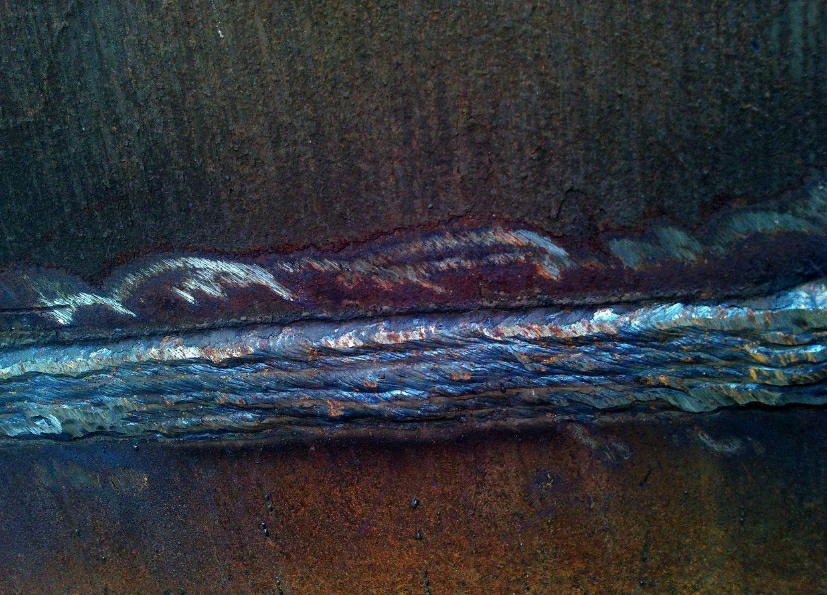Your Total Handbook to Preventing Weld Undercut Like a Pro
Your Total Handbook to Preventing Weld Undercut Like a Pro
Blog Article
Recognizing the Causes and Solutions for Undercut Welding in Metal Construction Procedures
In the world of steel fabrication processes, the incident of undercut welding presents a substantial challenge that demands a detailed understanding of its causes and feasible solutions. The intricate interaction of different aspects throughout welding procedures can bring about this undesirable phenomenon, impacting the structural integrity and overall high quality of the welded joints - Preventing weld undercut. By exploring the source of undercut welding and checking out efficient restorative procedures, producers can raise the requirement of their craftsmanship and make sure the production of perfect metal parts
Typical Reasons For Undercut Welding
Regularly overlooked in metal construction, undercut welding happens due to numerous factors that demand precise interest and expertise to be efficiently alleviated. In addition, inappropriate welding strategies, such as using the wrong welding angle or travel speed, can also contribute to undercut formation. The choice of welding parameters, such as voltage, current, and wire feed speed, plays a significant role in the occurrence of undercut welding.
Impact of Incorrect Welding Parameters
Incorrect welding specifications can substantially jeopardize the stability and high quality of welded joints in metal fabrication processes. The influence of incorrect welding parameters materializes in various ways, resulting in structural weak points and issues in the bonded elements. One vital element affected by improper welding criteria is the infiltration depth of the weld. Inadequate heat input due to reduced welding currents or excessively high travel rates can lead to inadequate fusion in between the base steels, leading to insufficient joint infiltration and compromised bonds. Conversely, too much warm input triggered by high welding currents or slow-moving travel rates can cause burn-through and extreme support, creating a weak and unsteady weld framework. Furthermore, incorrect specifications such as improper voltage setups or incorrect electrode angles can add to erratic weld grain profiles, lack of blend, and boosted chances of flaws like undercutting. As a result, meticulous interest to welding parameters is vital to ensure the production of high-quality welds with the preferred mechanical homes and structural stability.
Impact of Improper Lantern Angle
Improper lantern angle in welding procedures can considerably influence the high quality and integrity of the last weld joints in metal fabrication processes. Undercutting is an usual welding issue where a groove develops along the weld toe, deteriorating the joint and compromising its architectural integrity.
A torch angle that is also steep can bring about insufficient infiltration, incomplete combination, and increased spatter. On the various other hand, a lantern angle that is too superficial can result in extreme infiltration, burn-through, and distortion of the base material. Preventing weld undercut. Appropriate lantern angle is vital for ensuring constant weld top quality, strength, and appearance
To avoid undercutting and other problems brought on by inappropriate torch angles, welders need to be educated over at this website to maintain the appropriate lantern angle throughout the welding procedure. Regular monitoring and modification of lantern angles throughout welding can help achieve sound welds with very little issues.
Role of Inadequate Welding Techniques

An additional aspect of inadequate welding methods is incorrect weld prep work. Poor cleansing of the base steels, incorrect joint design, or insufficient edge preparation can all add to damage welding. Inadequate shielding gas coverage or informative post using the incorrect kind of gas can result in insufficient combination and the development of undercut flaws.
To attend to the function of insufficient welding techniques in metal fabrication procedures, it is important to give thorough training for welders. Correct education and learning on welding specifications, joint preparation, and shielding gas option can assist stop undercut welding and guarantee premium welds in metal manufacture tasks.
Efficient Solutions for Undercut Welding
Dealing with undercut welding in steel manufacture needs implementing reliable options to enhance weld top quality and architectural integrity. Among the main solutions to battle undercut is to adjust welding specifications such as voltage, current, and take a trip rate to make certain appropriate warmth input and blend. By fine-tuning these setups, welders can stop extreme melting of the base steel and filler material, minimizing the chance of undercut development.
Furthermore, proper joint prep work is critical in protecting against undercut. Making sure clean base steel surfaces devoid of contaminants and making use of the suitable bevel angle can aid promote much better weld infiltration and decrease the danger of undercut - Preventing weld undercut. Employing appropriate welding strategies, such as oscillating the torch or weaving, can likewise assist in distributing warm equally and filling the weld joint effectively, minimizing the possibility of undercut flaws
Furthermore, choosing the right welding consumables, consisting of electrodes and filler steels, is important in alleviating undercut. Making use of materials with suitable chemical structures and mechanical properties can contribute to accomplishing sound welds with very little undercut. Routine examination and top quality control measures ought to likewise be executed to find and resolve undercut concerns without delay, ensuring the overall integrity of fabricated steel parts.

Verdict
In verdict, recognizing the reasons and remedies for undercut welding in steel construction processes is important for accomplishing top notch welds. By attending to typical causes such as incorrect welding criteria, inappropriate torch angle, and inadequate welding techniques, welders can protect against damaging and make sure strong, durable welds. It is essential to pay focus to these aspects and execute effective remedies to enhance the overall welding process and last product quality.

Report this page